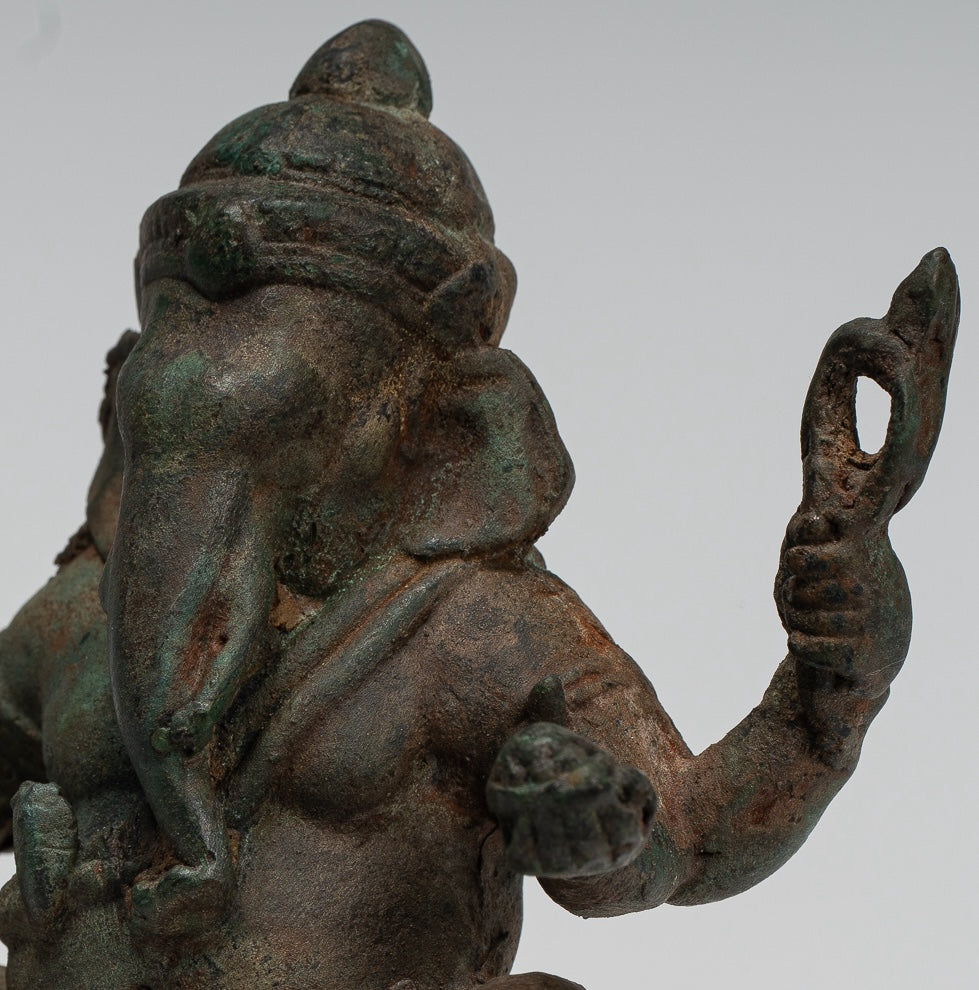
The Symbology of Ganesha in Thailand: A Cultural and Spiritual Odyssey
Ganesha, the elephant-headed Hindu deity known as the remover of obstacles and the god of beginnings, holds a unique and revered place in Thai culture and spirituality.
Despite being rooted in Hinduism, Ganesha has seamlessly integrated into Thai Buddhist practices and everyday life, symbolizing a fascinating cultural synthesis.
This blog post delves into the symbology of Ganesha in Thailand, exploring his origins, representations, and the multifaceted roles he plays in Thai society.
Origins and Integration
Ganesha, also known as Phra Phikanet in Thailand, has been a part of Thai culture for centuries, introduced through the cultural and religious exchanges between India and Southeast Asia. These exchanges were facilitated by trade, migration, and the spread of Hinduism and Buddhism across the region. Over time, Ganesha transcended his Hindu roots to become a prominent figure in Thai Buddhist iconography and rituals.
Iconographic Features
The iconography of Ganesha in Thailand shares similarities with Indian depictions but also incorporates distinct Thai elements. Here are some of the key features:
-
Elephant Head: Ganesha’s elephant head is symbolic of wisdom, strength, and intellect. In Thai culture, the elephant is a national symbol and is associated with royalty and power, further enhancing Ganesha’s stature.
-
Multiple Arms: Typically depicted with four arms, Ganesha’s multiple arms signify his omnipotence and ability to perform multiple tasks simultaneously. Each hand often holds a symbolic object, such as a trident, a noose, a goad, and a bowl of sweets, each representing different aspects of life and spiritual tools.
-
Vahana (Mount): Ganesha is often shown with his vahana, the mouse or rat, symbolizing humility and the ability to overcome desires. In Thai representations, the vahana is sometimes depicted with more emphasis on its dynamic and supportive role.
-
Abhaya Mudra: One of Ganesha’s hands is often shown in the abhaya mudra, a gesture of protection and reassurance, emphasizing his role as a protector and remover of obstacles.
-
Thai Artistic Elements: Thai depictions of Ganesha might incorporate traditional Thai artistic styles, such as elaborate headdresses, flowing robes, and intricate designs, blending Indian and Thai aesthetics.
Symbolic Roles
Ganesha’s symbology in Thailand is multifaceted, reflecting various cultural, religious, and social dimensions:
-
Remover of Obstacles: As in Hinduism, Ganesha is revered in Thailand as the remover of obstacles. He is often invoked at the beginning of new ventures, during examinations, business dealings, and important life events to ensure success and smooth progress.
-
God of Arts and Sciences: Ganesha is also considered the patron of arts and sciences. Artists, musicians, and students often seek his blessings for creativity, knowledge, and intellectual pursuits. Many Thai universities and art institutions have shrines dedicated to Ganesha.
-
Protector and Guardian: In Thai Buddhism, Ganesha is seen as a guardian of temples and households. Statues and images of Ganesha are commonly placed at the entrances of temples, homes, and businesses to ward off evil and bring good fortune.
-
Cultural Symbol: Ganesha’s presence in Thai culture extends beyond religious practices. He is a prominent figure in festivals, rituals, and even popular culture, symbolizing a bridge between tradition and modernity. His imagery is found in various forms, from street art to commercial logos, reflecting his widespread appeal.
Major Shrines and Temples
Several significant shrines and temples in Thailand are dedicated to Ganesha, attracting devotees from all walks of life:
-
Ganesha Shrine at CentralWorld: Located in the heart of Bangkok, this shrine is one of the most famous Ganesha shrines in Thailand. It is a popular spot for worshippers seeking blessings for success and prosperity.
-
Wat Phra Si Mahathat: This Buddhist temple in Bangkok houses a prominent Ganesha statue, where devotees perform rituals and offer prayers.
-
Phra Phikanet Shrine at Silpakorn University: As a patron of arts and education, Ganesha is venerated at Silpakorn University, Thailand’s leading institution for fine arts.
Rituals and Festivals
Thai rituals and festivals dedicated to Ganesha are vibrant and diverse, reflecting his importance in daily life:
-
Ganesha Chaturthi: Celebrated with great fervor, this Hindu festival marking Ganesha’s birthday has been embraced by Thai devotees. The festivities include elaborate processions, idol immersions, and cultural performances.
-
Daily Offerings: Many Thai people make daily offerings to Ganesha statues in their homes or at local shrines, presenting flowers, fruits, and sweets to seek his blessings.
-
Special Ceremonies: Businesses and educational institutions often hold special ceremonies to honor Ganesha, especially during important events or at the start of new projects.
Conclusion
The symbology of Ganesha in Thailand is a testament to the rich cultural tapestry of the region, showcasing how religious and artistic traditions can merge to create a unique and enduring legacy.
Ganesha’s role as a remover of obstacles, patron of arts and sciences, and guardian of prosperity and protection resonates deeply within Thai society, reflecting the deity’s universal appeal and adaptability.
As Thailand continues to evolve, the reverence for Ganesha remains a constant, bridging the past and the present, tradition and modernity.


